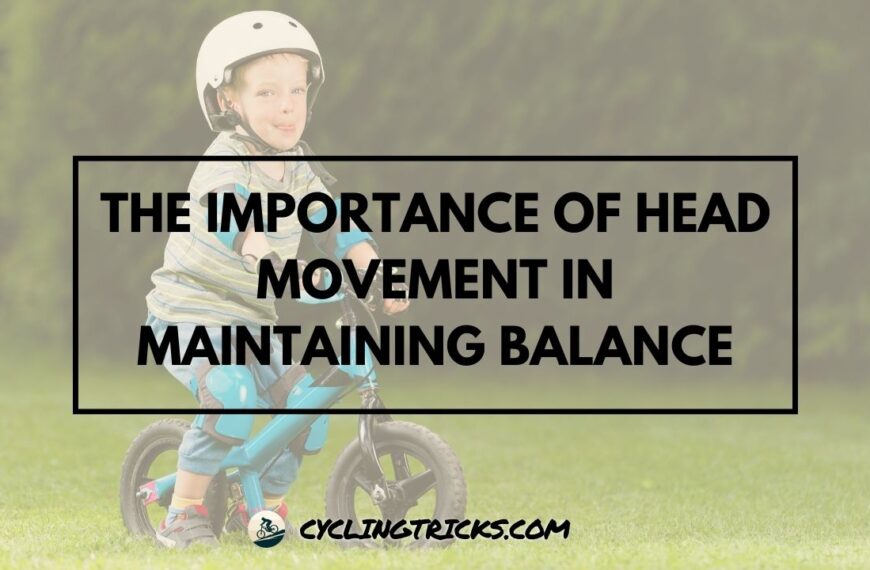As a biking enthusiast, I understand the critical role that bike suspension plays in achieving a top-notch riding experience. A bike suspension system has the potential to enhance comfort, improve control, and transform your biking performance on various terrains.
In this article, we will explore the impact of bike suspension on your overall riding experience and the numerous benefits it provides, from improving riding comfort to enhancing bike handling.
So, let’s delve into the world of bike suspension types, technologies, maintenance, and tips for choosing the right system to elevate your biking game.
Understanding Bike Suspension Types
When it comes to bike suspension, there are several types available on the market, each with its pros and cons. By understanding the differences between the available systems, you can decide which one best suits your riding needs. The two most common bike suspension types are:
| Suspension Type | Description |
|---|---|
| Suspension forks | This type of suspension system features elongated legs that attach to the bike frame and steerer tube. Suspension forks are ideal for cross-country riders, as they provide vertical cushioning, allowing the bike to glide over rough terrain while maintaining excellent traction and handling. |
| Bike shock absorber | A bike shock absorber is a rear suspension system that is ideal for gravity, downhill, or freeriding enthusiasts. Bike shock absorbers pack a lot of power, and they are designed to absorb heavy impacts, keeping the bike grounded and stable while providing comfort. |
Other types of bike suspension include rigid, which does not have any suspension system, hardtail, which features a suspension fork but no bike shock absorber, and full suspension, which combines both front and rear suspension systems.
Each type of bike suspension has unique benefits and drawbacks, so do thorough research before deciding on the right suspension system for you.
The Benefits of Bike Suspension
If you’re looking to improve your overall biking experience, investing in bike suspension is a game-changer. With the right suspension system, you can enjoy a more comfortable ride while also enhancing your performance on various terrains.
Let’s take a closer look at the many benefits of having bike suspension:
- Better Riding Comfort: One of the most significant advantages of bike suspension is the improved riding comfort it provides. By absorbing impacts and reducing vibrations when traveling on rough terrain, suspension can help prevent discomfort and minimize the risk of injury.
- Enhanced Biking Performance: Bike suspension can also significantly improve your biking performance. By providing better traction and control, especially on uneven or bumpy surfaces, suspension helps you maintain your speed and balance, leading to a more efficient and effective ride.
- Improved Bike Handling: Bike suspension can also tremendously improve your bike handling skills. With better stability and control, you can navigate through corners and obstacles with ease, providing you with more confidence and control over your bike.
In summary, adding a suspension system to your bike can enhance your comfort, performance, and handling skills, making your overall biking experience more enjoyable. So, if you’re looking to take your riding to the next level, investing in bike suspension is an excellent place to start!
Exploring Bike Suspension Technologies
When it comes to bike suspension, there are several technologies on the market to choose from. Each suspension technology has unique features that cater to specific riding needs, and understanding them can help you to choose the right system for your bike.
- Air Suspension: This type of bike suspension uses compressed air as a spring, resulting in a light suspension system that is perfect for uphill rides. Air suspension allows for smooth riding, and the suspension can be adjusted according to rider preferences.
- Coil Suspension: Coil suspension uses a metal spring to absorb shock. This type of suspension can handle heavier loads and is ideal for downhill riding, where the rider requires more control and stability. Coil suspension is durable and requires low maintenance.
- Hybrid Suspension: This technology combines elements of both air and coil suspension to create a system that offers the best of both worlds. Hybrid suspension provides a comfortable ride with ample control and adjustability.
Note: While there are other niche suspension technologies available in the market, air suspension, coil suspension, and hybrid suspension are the most widely used suspension types in the cycling world.
By exploring the different bike suspension technologies, you will be able to choose the best system for your specific riding needs, comfort, and performance requirements.
Whether you want a suspension system that offers more control and stability for downhill rides, or you prefer a lightweight system for climbing uphill, understanding suspension technologies will help you make the right choice.
Bike Suspension Setup and Adjustment
Properly setting up and adjusting your bike suspension is crucial for achieving optimal performance. Whether you are a beginner or an experienced rider, suspension tuning can significantly improve your riding experience.
Here are some key considerations and tips for setting up your bike suspension:
- Understand your Riding Style: Your bike suspension setup should match your riding style and terrain preferences. For instance, a cross-country rider will require a different suspension setup compared to an enduro rider. Think about your primary use of the bike and adjust accordingly.
- Setting the Right Sag: Sag is the amount of suspension compression when you are seated on the bike. Setting the right sag ensures that your bike is performing optimally. For beginners, it is recommended to set the sag between 15-20% of your bike’s rear suspension travel.
- Adjusting Compression and Rebound Damping: Compression damping controls how your bike handles bumps and impacts. On the other hand, rebound damping controls how your bike responds when it rebounds after a bump. Adjusting these settings can significantly enhance your bike suspension performance.
- Make Necessary Adjustments: It is essential to make necessary adjustments based on your personal preference and comfort level. Experiment with different settings and adjust your suspension system accordingly. This way, you can achieve the optimal setup that matches your riding style.
By following these tips, you can fine-tune your bike suspension setup and achieve optimal riding comfort and control. Remember, bike suspension adjustment is an ongoing process, and you should review and tweak your setup regularly to match your ever-changing riding preferences and terrain.
Bike Suspension Maintenance
Regular maintenance is essential for keeping your bike suspension system in top condition. Neglecting this can severely impact your riding experience. Here are some essential tips for maintaining your bike suspension system:
- Clean your suspension system: Dirt, mud, or grime buildup can cause damage to your bike suspension system. Clean it using a soft cloth, bike-specific cleaners, and brushes to keep it in optimal condition.
- Regularly inspect your suspension system: Conduct frequent inspections to detect any signs of wear and tear. Check for loose or damaged parts, cracks, or dents that can cause significant damage to your suspension system.
- Check for air pressure: If your bike suspension system has air chambers, regularly check the air pressure to maintain peak performance. Refer to your manufacturer’s guidelines for the recommended pressure levels.
- Replace worn-out components: Damaged or worn-out components such as suspension bushes, seals, or pivot bearings can affect the performance of your suspension system. Replace them whenever needed.
- Get professional maintenance: Professional bike mechanics can provide thorough maintenance services for your suspension system, such as re-greasing pivot points, bleeding hydraulic systems, and tuning the suspension.
By regularly maintaining your bike suspension system, you can extend its lifespan, ensure optimal performance, and enhance your overall riding experience.
Comparing Bike Suspension Systems
When it comes to choosing the right bike suspension system, there are several factors to consider. These include the type of riding you’ll be doing, your skill level, and your personal preferences.
In this section, we’ll compare different bike suspension systems in terms of their features, performance, and suitability for various riding styles.
Suspension Forks vs. Rear Shock Absorbers
The two main types of bike suspension systems are suspension forks and rear shock absorbers. Suspension forks are located on the front of the bike, while rear shock absorbers are located on the rear.
Suspension forks are typically used for cross-country, trail, and all-mountain riding, while rear shock absorbers are used more frequently for downhill and freeride riding.
While both types of suspension systems serve the same basic purpose — to absorb the impact of rough terrain and enhance rider comfort — there are several key differences to consider.
| Features | Suspension Forks | Rear Shock Absorbers |
|---|---|---|
| Placement | Front | Rear |
| Suspension Travel | Typically 80-200mm, depending on riding style | Typically 100-200mm |
| Weight | Usually lighter than a rear shock, depending on model and features | Typically heavier, due to added weight of linkage system and larger travel |
| Adjustability | Typically more adjustable, with the ability to adjust stiffness, rebound, and compression | Limited adjustability, with the ability to adjust stiffness and rebound only |
As you can see from the table above, there are several key differences between suspension forks and rear shock absorbers. Suspension forks are typically lighter and more adjustable, making them an excellent choice for cross-country, trail, and all-mountain riding. Rear shock absorbers are typically heavier but offer more travel and better performance on downhill and freeride trails.
Choosing the Right Bike Suspension
When choosing the right bike suspension system, it’s important to consider your riding style and personal preferences. If you’re an experienced rider who enjoys technical, downhill terrain, a rear shock absorber may be the best choice. If you prefer cross-country or all-mountain riding, a suspension fork may be a better option.
Additionally, it’s important to consider the specific features of each suspension system, such as adjustability, travel, and weight. By taking these factors into account, you can choose the right bike suspension system for your needs, ensuring optimal performance and comfort on the trails.
How Bike Suspension Affects Riding Experience
When it comes to biking, comfort and control are essential elements that impact your overall experience. The type of bike suspension you choose significantly affects both factors, leading to a more enjoyable ride.
Without proper suspension, biking on challenging terrains can be an uncomfortable experience, leading to soreness and fatigue. The suspension system absorbs shock and vibration, smoothing out the ride and improving your comfort level.
Moreover, improving riding comfort with bike suspension also enhances your control, giving you the confidence to tackle difficult terrain safely. A high-quality suspension system allows for better handling and agility, preventing accidents and falls.
How Suspension Affects Comfort
The suspension system determines how much shock and vibration the bike encounters as you ride. Without suspension, the roughness of the terrain would impact your body, leading to discomfort and possible long-term injury.
By installing suspension, the bike absorbs the shock, acting as a cushion. You’ll feel less discomfort as you traverse rocks, bumpy paths, and uneven ground, leading to a more enjoyable ride.
How Suspension Affects Control
When riding on challenging terrain, you need full control over your bike. With bike suspension, you’ll experience more control and responsiveness, making it easier to navigate through tricky pathways.
As the suspension absorbs the shock and vibrations from the terrain, the bike maintains better contact with the ground, enhancing stability and preventing accidental slips and falls.
| Benefits | How Bike Suspension Improves Them |
|---|---|
| Comfort on Challenging Terrain | Absorbing shock and reducing vibrations for a smoother ride |
| Better Handling and Agility | Enhancing control and responsiveness for improved stability |
| Preventing Injuries | Reducing the impact on the body for a safer ride |
In conclusion, selecting the right bike suspension system significantly influences your overall biking experience. By improving riding comfort with bike suspension, you’ll be able to tackle challenging terrains with confidence, enjoying the ride without fear of discomfort or injury.
Tips for Choosing the Right Bike Suspension
Choosing the right bike suspension system can significantly impact your riding experience, and it’s essential to find the perfect one for your needs. Here are some practical tips to help you make an informed decision:
Consider Your Riding Style and Terrain Preferences
Whether you’re an adventurous mountain biker or a casual road cyclist, it’s crucial to consider your riding style and terrain preferences. Suspension systems are designed to cater to different styles, and it’s vital to find one that aligns with your needs. Research the available options and match them to your riding style and terrain requirements.
Understand Suspension System Features
When choosing the right suspension system, it’s vital to understand the available features. These can vary significantly between models, and it’s essential to evaluate which ones will work best for you.
Some of the critical features to consider include travel, stiffness, adjustability, weight, and durability. Take some time and research these features to find the ideal suspension system for your bike.
Test Ride Different Suspension Systems
No matter how much research you do, it’s always challenging to know which suspension system is ideal for you until you try it. Many bike shops offer test rides, and it’s crucial to take advantage of this.
Test ride different suspension systems, and pay attention to how they feel. A test ride will allow you to experience how different suspension systems work and help you make an informed decision.
Consult With an Expert
When in doubt, it’s always wise to consult with an expert. Bike suspension systems can be complex, and it’s easy to get overwhelmed while making a decision. Consulting with an expert will provide valuable insights and ensure you make an informed decision.
Choosing the right bike suspension system is crucial to enhancing your overall riding experience. Consider your riding style and terrain preferences, understand suspension system features, test ride different ones, and consult with an expert.
With these tips, you’ll be equipped to make a confident decision and find the perfect bike suspension system for your needs.
Conclusion
As we come to the end of this article, I hope you have gained valuable insight into the importance of the suspension system in your bike’s performance. By exploring the different types of suspension, their benefits, and how they affect your riding, you can make an informed decision when choosing the right system for your needs.
Remember, regular maintenance is crucial in ensuring optimal bike suspension performance. By following simple guidelines, you can keep your suspension system in top condition, extending its lifespan.
Choosing the right suspension system is key to enhancing your overall riding experience. By understanding your riding style and terrain preferences, you can select the system that best suits your needs. Whether you’re a seasoned pro or a new rider, optimizing your bike suspension performance is essential for a smooth and enjoyable ride.
Thank you for taking the time to read this article. I hope it has been helpful in providing you with the necessary knowledge to make the right choice when it comes to your bike suspension system. Remember to always prioritize safety and enjoy your ride.









